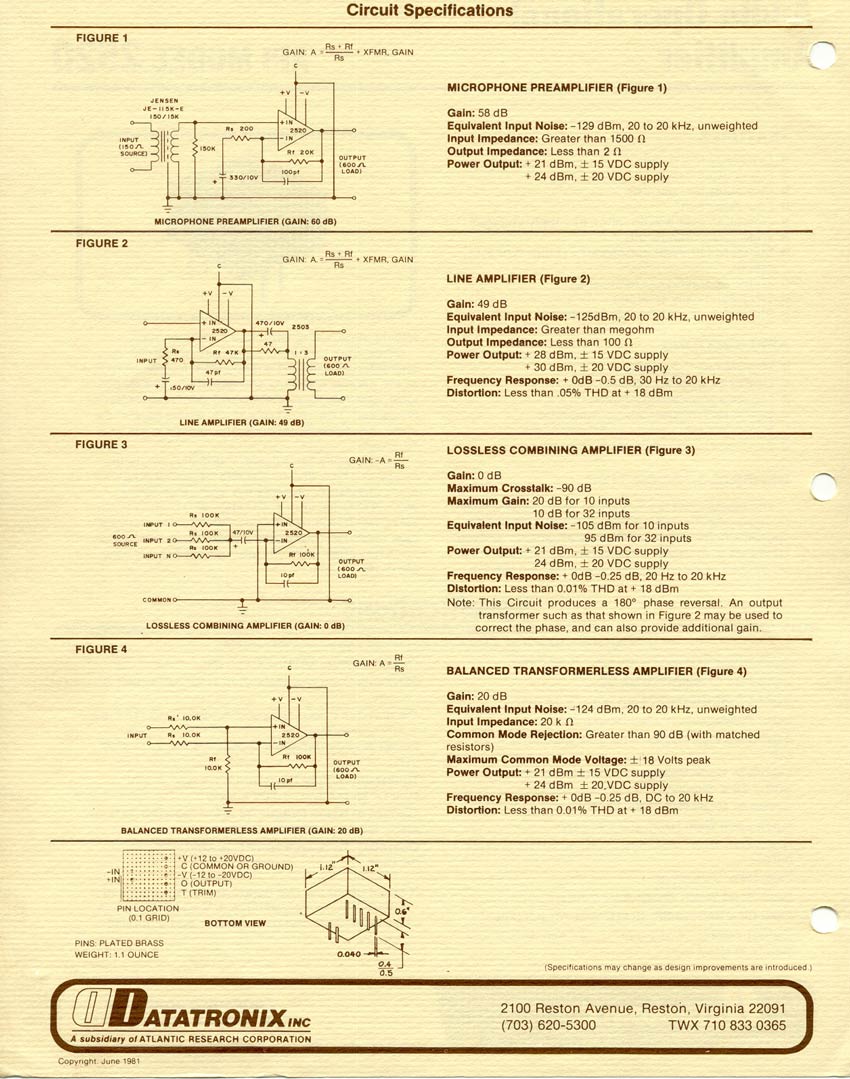What can you tell me about the API 2520?
- What made it famous or sot after?
- Did API actually design it?
- This is reissued in this Pulse EQP 1A3. Are they making it? The spec sheets attached have a date of 1981.
I can't just demo one here either. Any history on it would be a fun read at least.
Is this it on the back of this EQP 1A3
Comments
Ya, that's the company that my friend/colleague, Paul Wolff, bou
Ya, that's the company that my friend/colleague, Paul Wolff, bought API from back in the early 1980s. And yup, those are the circuits you'll find in API boards, since the beginning. I've got the turntable preamp. Yup, quite nice. Every Record, sounds like it was recorded on an API LOL. Hey... I've got a great idea! How about an API, 2 inch 24 track machine? Yeah baby! And it's not hard, to do. Breathe new life into that old transport of yours...
Look... I'm moving to Austin, Texas, before the end of spring. I'm going to go to Rupert Neve and suggest that we build a new 24 track machine using Rupert's op amps? It's almost in vogue again. Nobody was making ribbon microphones a few years ago either. And I bitched. Now look! I better be careful what I say? Now everybody will start building new 24 track analog machines!
I want two. One, 24 Track, API. And one 24 Track, Neve.
Mx. Remy Ann David
To the best of my knowledge, the API 2520 was designed by Saul W
To the best of my knowledge, the API 2520 was designed by Saul Walker, where he was with MELCOR. It was known as the 1731 A. Later rebranded to the API 2520.
Unlike other operational amplifiers that are popular to use and have slew rates of 15 V per microsecond (Neve, Jensen 990) the API 2520 only has a slew rate of 1.5 V per microsecond. That's as slow as a 741 IC chip, op amp. The only difference here is that because of the output buffer transistors, the 2520 never slews. So it doesn't make any difference that it has such a slow slew rate. Virtually no one knows this. If they did? They may not have purchased them? Nevertheless, they do sound great. Unfortunately, unlike the Neve's op amps, which are repairable. The 2520, is not repairable. So while they're great, it does give one pause to think, if you're so inclined to doing your own maintenance. Nothing can be fixed on a 2520. You toss them out. Aargh.
Thankfully, they rarely go bad.
Mx. Remy Ann David
Thanks guys. As much as I've loved the API stuff over the years
Thanks guys.
As much as I've loved the API stuff over the years and owns some. They're still great. The only problem folks have to avoid, especially those of us in the DIY camp. There are couple thousand used 2520's out there. They were built under Paul's attempt at simplifying the construction. He goofed. Much in the same way as Siemens/Neve, goofed, some years back.
Many of the output transistors are toast. Paul approached Panasonic about building the 2520 as all surface mount. I think he ran at least 1000 or more. They work perfectly fine... for a while. Those that burn twice as bright live half as long. Whoops. Yeah... he had a melt down. The later 2520's were all surface mount except for the output swing transistors. They have to stuff, circuit boards, for those. Higher cost blah blah. So buyer beware. I'd be very leery at purchasing just used 2520's. Sometimes a bargain is not a bargain.
I still have some Melchor, 1731A's, still a goin'. Old Neil Muncey, 8 pack, microphone preamp. Though 2 are now 2520's inside.
Yeah... I'm from the 1970s.
Mx. Remy Ann David






well you have it all right there. the 2520 is the basic API buil
well you have it all right there. the 2520 is the basic API building block .... op amp used in all API products.